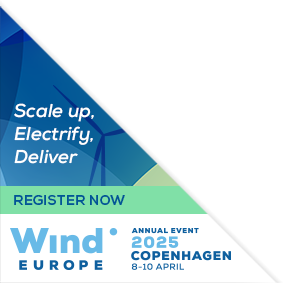Posters
Siblings:
ProceedingsProgrammeSpeakersPostersContent PartnersPowering the FutureMarkets TheatreResearch & Innovation in actionStudent programmePresenters dashboardCome meet the poster presenters to ask them questions and discuss their work
We would like to invite you to come and see the posters at our upcoming conference. The posters will showcase a diverse range of research topics, and will give delegates an opportunity to engage with the authors and learn more about their work. Whether you are a seasoned researcher or simply curious about the latest developments in your field, we believe that the posters will offer something of interest to everyone. So please join us at the conference and take advantage of this opportunity to learn and engage with your peers in the academic community. We look forward to seeing you there!

PO104: Sea ice challenges for floating offshore wind turbines (FOWTs)
Iman El Gharamti, Research Scientist, VTT
Abstract
The Baltic Sea is an attractive environment for wind energy production due to its shallow coastline and consistent wind velocities. In the Gulf of Bothnia, wind farms are planned in areas which is too deep (> 80m) for bottom-fixed structures. In these areas, floating offshore wind turbines (FOWTs) need to be developed. So far, FOWTs have not been installed in cold regions where sea ice is a common occurrence. In fact, challenging sea ice conditions introduce several threats for the design and operation of FOWTs. Global warming is accelerating these threats as the ice conditions are constantly changing, and the ice is becoming more mobile, inducing vibrations of the entire WT. Therefore, the main challenges in these icy areas are to study the variability in ice conditions, ice loads on different type of foundations, and ice-induced response in structures - both in ultimate and fatigue load situations. The dynamic interaction between a FOWT and ice cannot be ignored, and a proper understanding of sea ice conditions and loads on FOWTs is necessary within the offshore wind research community, industry, and certification authorities. Prediction of ice loads is a big uncertainty because the ice behavior is affected by several factors such as the temperature, scale, and loading rate. Nowadays, such uncertainty is mitigated in standards and guidelines by a conservative design approach, leading to cost-ineffective designs. Accordingly, there is an urgent need in the industry for a more confident evaluation of ice conditions and loads and development of simulation tools that provide a fully-coupled modeling of the dynamic response of FOWTs. This work provides a general overview of the state-of-the-art of the available WT standards, ice models, and WT simulation tools. The implemented approaches at the Technical Research Centre of Finland (VTT), regarding ice conditions evaluation and ice loads calculations are shortly described.










